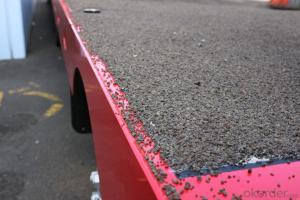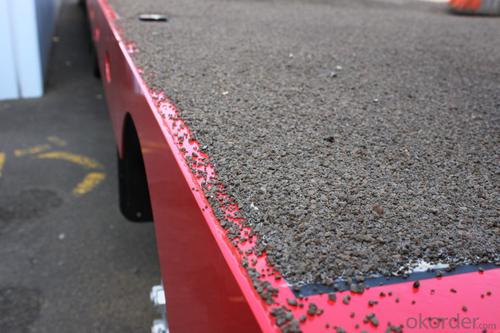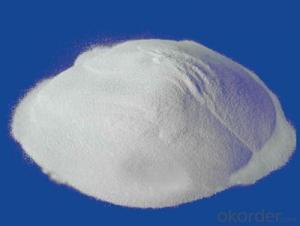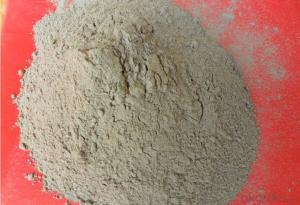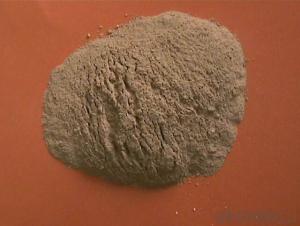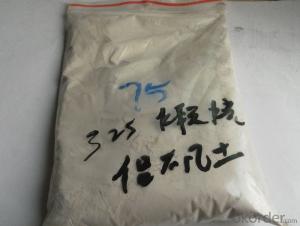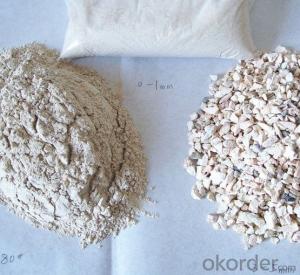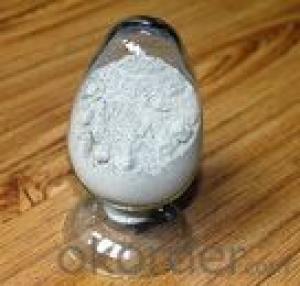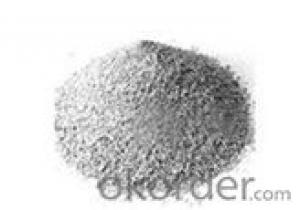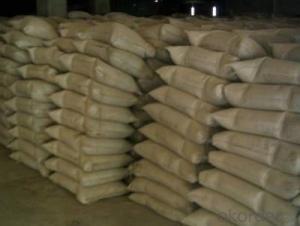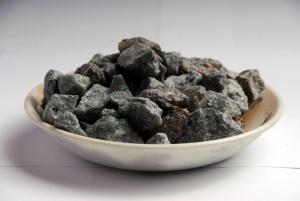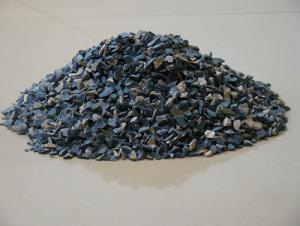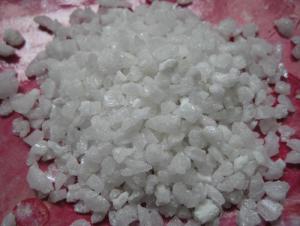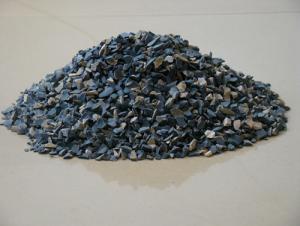Raw Materials for High Alumina Refractory Cement with Low Price
- Loading Port:
- Tianjin
- Payment Terms:
- TT OR LC
- Min Order Qty:
- 0 m.t.
- Supply Capability:
- 40000 m.t./month
OKorder Service Pledge
OKorder Financial Service
You Might Also Like
Description of High Alumina Refractory Cement
Products | Calcium Aluminate Cement /High Alumina Cement CA-50 |
Applications | 1,As binders calcium aluminates cement are used in concretes and mortars for specialised applications for their properties of resistance to corrosion, abrasion and heat combined with rapid hardening and the ease of controlling grading variations. with new properties are then obtained. In this way, aluminates act as both a complex hydraulic binder and a mineral reagent interacting with the other components in the mix. 2,As reagents, calcium aluminates are found in non-hydraulic systems. This is the case in metallurgical treatments (iron and steel industry, foundry) where specific grades of calcium aluminate are used for their low-temperature melting properties and for trapping molten metal impurities. |
Features | 1,Very low mixing-water requirement |
2,Very high purity | |
3,High product consistency | |
4,High cold and sintered strength | |
5,Very tight specifications of setting times |
product | CA50F | A600 | A700 | A900 | CA50R | ||
Chemical Compositionn (%) | SiO2 | ≤8.0 | ≤7.8 | ≤7.5 | ≤5.5 | ≤7.0 | |
Al2O3 | ≥50.0 | ≥50.0 | ≥51.0 | ≥53.5 | ≥52.0 | ||
Fe2O3 | ≤2.5 | ≤2.5 | ≤2.5 | ≤2.5 | ≤2.5 | ||
R2O | ≤0.4 | ≤0.4 | ≤0.4 | ≤0.4 | ≤0.4 | ||
S | ≤0.1 | ≤0.1 | ≤0.1 | ≤0.1 | ≤0.1 | ||
Cl | ≤0.1 | ≤0.1 | ≤0.1 | ≤0.1 | ≤0.1 | ||
45µm residue (%) | ≤20 | ≤15 | ≤12 | ≤8 | ≤8 | ||
Blaine (m2/kg) | ≥300 | ≥300 | ≥320 | ≥350 | ≥350 | ||
InitialSetting (min) | ≥30 | ≥45 | ≥60 | ≥90 | ≥30 | ||
FinalSetting (h) | ≤6 | ≤6 | ≤6 | ≤6 | ≤6 | ||
Flexural strength (MPa) | 6h | —— | —— | —— | —— | ≥3.0 | |
1d | ≥5.5 | ≥6.0 | ≥6.5 | ≥8.0 | ≥7.0 | ||
3d | ≥6.5 | ≥7.0 | ≥7.5 | ≥10.0 | ≥8.0 | ||
Compressive strength (MPa) | 6h | —— | —— | —— | —— | ≥30 | |
1d | ≥40 | ≥45 | ≥55 | ≥72 | ≥60 | ||
3d | ≥50 | ≥55 | ≥65 | ≥82 | ≥70 | ||
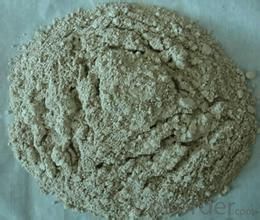
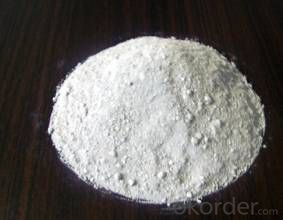
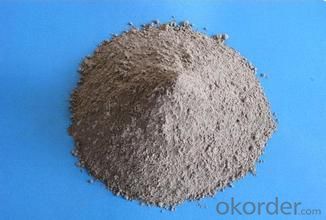
Packaging & Delivery
| Packaging Details: | 1,Packaged in multi-ply paper bags on pallet and polyethylene shrink wrapping. For added protection polyester strapping may be applied. 2,big bags may be placed on standard pallets with polyethylene shrink wrapping. |
| Delivery Detail: | upon to the quantity of order |

- Q: how to use boiler fireclay
- Boiler refractory, diluted with water to touch the places where needed, can be used after high temperature baking.
- Q: How is the grading of the level A new material fire insulation material?
- The thermal insulation materials are generally divided into level A and level B according to the flame rating. Level A is the non-combustible material, and level B is the combustible materials. The level B material is to blame for the fire in Shenyang hotel in CCTV building a few years ago . At present, the level A materials are widely used, with some prices even cheaper than the level B material. A level is roughly divided into insulation mortar, phenolic board, rock wool board and foam cement board, ect.
- Q: How to distinguish between class A fire resistant door and class B fire resistant door from appearance ? What are the differences between the two refractories? Thank you !
- From the perspective of appearances, grade A is 70mm, B 50mm. Their materials are the same .
- Q: The classification of fire-resistant material
- Refractory material cna be divided into common and special fire proofing material. Common fire proofing material can be sub-divided in to acid fire proofing material, neutral fire proofing material. and alkaline fire proofing material according to chemical properties. Special fire proofing material can be divided into high temperature oxide refractory, refractory compounds and high temperature composite materials according to the composition. In addition, it also can be divided into common refractory products (1580 ~ 1770 ℃), high-grade refractory products (1770 ~ 1770 ℃) and super refractory products (above 2000 ℃) according to the strength . According to the shape, it can be divided into block (standard brick, special-shaped brick, etc.), special shape (crucible, sagger, pipe, etc.), fibrous (aluminum silicate, zirconia and boron carbide, etc.) and irregular shape (refractory clay, refractory castable, ramming material and so on). According to sintering process, it can be divided into sintered product, fused cast product and melting jetting product.
- Q: What things and cement mixed can act as refractory?
- Cement acts as cementing material. Itself works by refractory aggregate and stir the refractory material for its gelling refractory aggregate both should be fire-resistant.
- Q: How long is the duration of fire resistance that fireproof door of level B can endure?
- According to the duration of fire resistance, fireproof doors can be divided into three levels, namely level A,B,C. And accordingly, the duration of fire resistance of them should not lower than 1.20h, 0.90h and 0.60h. Fireproof door, a door that can meet the requirements of fire resistance stability, fireproof door integrity and thermal insulation at a certain time, is a fireproof separator which is located in fireproof partition, emergency staircase and vertical silo. Apart from functioning as a common door, a fireproof can also prevent the spread of fire and smoke in a certain period to make sure that people are safely evacuated.
- Q: What are fire?ratings of wall thermal insulation material?
- 1.thermal insulation material with grade A combustion performance: YT inorganic active insulation material for wall thermal,rock wool, glass wool, foam glass, foamed ceramics, foam cement, hole-closed perlite, etc. 2.thermal insulation material with grade B combustion performance: Extruded polystyrene board(XPS)after special treatment/polyurethane(PU) after special treatment, phenolic aldehyde,gelatine powder polyphenyl granule, etc. 3.thermal insulation material with grade B2 combustion performance: Molding polystyrene board(EPS), extruded polystyrene board(XPS), polyurethane(PU), polyethylene(PE), etc.
- Q: What are the commonly used fire protection materials
- Firewall. The fire wall is made of non combustible material, and is directly installed on the base of the building or the reinforced concrete frame or fire proof walls . Fireproof limit of the firewall, according to the current "building regulations", is 4 hours, wheras the specification of Technical specification for concrete structures of tall building is 3 hours. doors resistant to fire, heat in a certain period of time These door usually prevent the spread of fire and gas in the fire resistant wall, staircase, pipe well. Fire door can be divided into steel fire doors, wood fire doors and composite materials fire door according to the material used. According to the limit of fire resistance can be divided into the class A fire door (1.2h), B fire doors (0.9), class C fire door (0.6h); (3) fire window. Windows resistant to fire, heat in a certain period of time It is usually installed in the fire resistance wall or doors; the fire shutter. This roller shutter can be refractory in a certain period of time. It is typically used for heat and fire insulation in escalator with difficulties to install fire resistant wall, fire resistant valve and smoke resistant valve. Fire resistant valve is installed in the ventilation and air conditioning system of air supply and return air duct, usually in the open state, fire, It will be turn off when the pipeline gas temperature reached 70 degrees, can meet the requirement for fire resistance and insulation for gas and fire. Smoke fire resistant damper installed in the exhaust system pipe, when the pipeline gas temperature reached 280 degrees, it will close automatically, insulating fire and gas.
- Q: What are the new types of refractories? What are the characteristics? Their applications and developments?
- Special materials often use AZS brick, corundum brick, magnesia chrome brick, silicon carbide, silicon nitride bonded silicon carbide, nitrides, silicides, sulfide, boride, carbide and other non oxide refractory materials; calcium oxide, chromium oxide, alumina, Magnesium Oxide, beryllium and other refractory materials. Often used insulation refractories are diatomite products, asbestos products, insulation panels and so on. Unshaped refractory materials commonly used are fettling, refractory ramming material, refractory castable, refractory plastic material, refractory clay, refractory gunning, refractory cast material, fireproof coating, lightweight castable, mud etc..
- Q: What is glass furnace used high-grade refractory materials?
- Glass furnace need to use refractory that temperature resistance is more than 1600 degrees, corundum mullite brick, etc., What's more, in the key parts of the glass furnace needs to use chromium zirconium corundum material, such as alumina hollow brick and corundum brick.
Send your message to us
Raw Materials for High Alumina Refractory Cement with Low Price
- Loading Port:
- Tianjin
- Payment Terms:
- TT OR LC
- Min Order Qty:
- 0 m.t.
- Supply Capability:
- 40000 m.t./month
OKorder Service Pledge
OKorder Financial Service
Similar products
Hot products
Hot Searches
Related keywords
